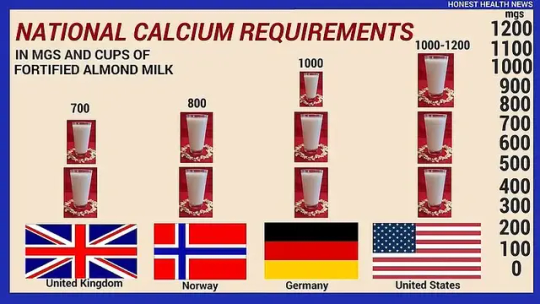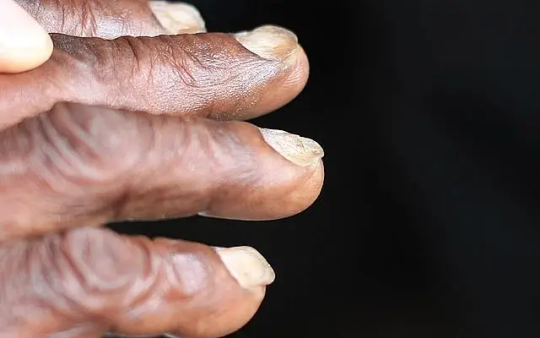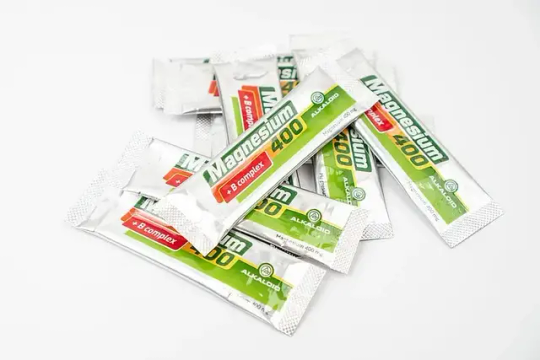#mineralsandvitamins
Explore tagged Tumblr posts
Text
The Importance of Vitamins and Minerals in Your Diet

Vitamins and Minerals are essential for our bodies to stay healthy. They help support normal growth and development, as well as helping to protect us from disease. Some vitamins play an important role in the development of our immune system, which helps defend us against illnesses and infections. Vitamins can be found in many foods we eat, such as fruits, vegetables, and whole grains. There are also many vegan foods that are rich in vitamins, such as nuts and seeds. In addition to these food sources, some people may need additional supplements to meet their daily recommended requirements.

Calcium and Osteoporosis by Country. Photo by Joy Weinberg. Flickr.
Calcium and Bone Health
Vitamins & Minerals also help our bodies stay strong by supporting bone health. Calcium is an important mineral for bone health and can be found in dairy products, leafy greens, and some vegan foods such as fortified plant milk and tofu. Getting enough calcium is especially important for young people and post-menopausal women who are at higher risk of developing osteoporosis. Examples of other minerals related to bone health include magnesium and vitamin D which can be found in fortified cereals, mushrooms, soy milk, and some fishes.

Ingredients for a healthy balanced diet. Photo by Marco Verch. Flickr.
A Balanced Diet
It is important to make sure we are getting enough of the essential vitamins and minerals from our diets as these nutrients play a key role in maintaining our overall health. Eating a balanced diet including plenty of fruits, vegetables, whole grains, and healthy proteins can help ensure that you are receiving all the vitamins and minerals you need. Also, speaking to your doctor or a nutritionist can help determine if any additional supplements may be necessary. Taking steps to ensure that you are getting enough vitamins and minerals can help keep your body healthy and strong so you can continue to live an active, vibrant life.

Oranges, Lemons and Limes. All great sources of Vitamin C. Photo by Robynlou Kavanagh. Flickr.
Importance of Vitamin C
The importance of vitamins and minerals goes far beyond simply maintaining our overall health. For example, Vitamin C is an essential nutrient needed to prevent a condition known as scurvy which was a common illness in sailors and pirates during the Age of Sail. Vitamin C helps keep our immune system strong and is also necessary for healthy teeth, bones, skin, and connective tissue development. It can be found in fruits such as oranges and kiwis, as well as fortified plant milk and breakfast cereals.

Effects of iron deficiency anemia. Photo by C Heitz. Wikimedia.
Benefits of Iron
Iron is also an essential mineral, found in many animal and vegan sources such as red meats, tofu, spinach, and lentils. Iron deficiency can lead to a variety of health conditions including fatigue and difficulty concentrating. It is especially important for people with certain medical conditions or those who are pregnant to get their iron levels tested regularly.

Packages of Magnesium powder. Photo by Marco Verch. Flickr.
Benefits of Magnesium
Magnesium is one of the most important minerals in our body as it helps regulate hormone production and nerve function. Magnesium can be found in nuts, legumes, dark leafy greens, and some grains. Make sure you are getting enough of these essential vitamins and minerals to keep your body healthy.
In Summary
Vitamins and minerals are essential nutrients needed to keep our bodies strong and healthy. Eating a balanced, nutrient-rich diet can help ensure that you are receiving all the recommended daily requirements of these essential vitamins and minerals. Also, certain medical conditions or those who may be pregnant may need additional supplements to meet their needs. Examples of important vitamins and minerals for bone health include calcium, vitamin D, magnesium, and iron – all of which are important components to consider when planning a healthy diet. Taking steps to ensure you are getting enough of the essential vitamins and minerals can help keep your body functioning at its best. Sources: THX News, British Nutrition Foundation & Osteoporosis. Read the full article
#BalancedDiet#BoneHealth#Calcium#Diet#Iron#Magnesium#MineralSuppliments#MineralsandVitamins#VitaminC#Vitamins#VitaminsandMinerals
0 notes
Photo

VEGANS, VEGETARIANS AND DIABETICS!!! Mineral classic contains 52 minerals and vitamins for all your body functions, b-bits for energy, amino acids to build and repair. An easy shot everyday for a boost boost! #minerals #mineralsandvitamins #vegan #veganfriendly #veganfriendlyproducts #veganfit #vegetarian #vegetarianfriendly #daiabetic #diabeticfriendly #diabeticlife #diabeticlifestyle #52minerals #bvitamins #bvitaminshots #energy #energyboost #easyshot #aminoacids #buildandrepair #liquidsolutions #betterthanatablet #easyhealth #boost #bodyboost #healthboost https://www.instagram.com/p/Bo4Jd19nBP5/?utm_source=ig_tumblr_share&igshid=13fa6izmeipif
#minerals#mineralsandvitamins#vegan#veganfriendly#veganfriendlyproducts#veganfit#vegetarian#vegetarianfriendly#daiabetic#diabeticfriendly#diabeticlife#diabeticlifestyle#52minerals#bvitamins#bvitaminshots#energy#energyboost#easyshot#aminoacids#buildandrepair#liquidsolutions#betterthanatablet#easyhealth#boost#bodyboost#healthboost
0 notes
Photo

#preventionproud #mineralsandvitamins #healing with nature#motivationalquotes #lifecoach #lovenature #learnfromnature #bloomingbeautiful #bloomingbeautifully — view on Instagram https://ift.tt/3aI1evD
0 notes
Text
Feeding Type-1 PSSM Horses
New Post has been published on http://lovehorses.net/feeding-type-1-pssm-horses/
Feeding Type-1 PSSM Horses
Pasture turnoutcanhelp type-1 PSSM horses, because it allowsconstantmovement; however, it might not be appropriate foreveryhorses.
Photo: Thinkstock
Q. My veterinarian recently diagnosed my horse with type-1 PSSM. Do youHaveany advice on feeding horses with this condition? She’s such aamenablehorseandI’dliketo do anything Icantograspher healthywithworking.
A. Horses with the GYS1 mutation (type-1 polysaccharide storage myopathy, or type-1 PSSM) accumulate abnormally large amounts of glycogen (the storagediversifyof glucose),OncewellWhentheidiosyncraticsugar amylase-resistant polysaccharide, in their muscle tissue. This mutation is inherited, exists inmanyequine breeds,andaffects asinnumerableWhen35% of individuals withinsurebreeds.
Researchers posit we mightHaveunwittingly selected horses with this gene defect. That’s because when humans historicallyprevioushorses for activities suchAspulling ploughsandcarriages, individuals withtheability to store more muscle glycogen would likelyHavingperformed better. The difference today is that weultimateour horses differently. We tend to work our horses less intenselywithfeed them beyond their needs. This results in the development of clinical signs in those horses with the gene mutation. Nutrition is, therefore,onekeysegmentin successfully managing horses with type-1 PSSM. In fact,approximately50% of horses with type-1 PSSM are reported to show improvement with diet changes alone. This might increase to 90% withadditionalchanges in exercise protocol.
The interesting thingofhorses with type-1 PSSM is that despite having 1.8 times more glycogen in their muscle tissue than normal horses, they suffer from energy deficits when exercised. The GYS1 mutation causes the enzyme glycogen synthases to be overly active,veryin the presence of insulin. Thismayresult in annearlydurableformation of glycogen.At the timethe storagekindof carbohydrate, glycogen iswornby muscle tissueAsthesource of adenosine triphosphate (ATP, the cell’s energy currency). Glycogencanbesecond handduring low-intensity aerobic workOncewellWhenduring more intense work when muscles need to work anaerobically.
FeedanLow-Startch Diet
After horses consume meals containing starchandsugar there’s more insulin present in the body, whichmaytrigger glycogen synthesiswithstorage. Therefore, the most importantdetailof feedingonehorse with type-1 PSSM is limiting starch levelswithreadily available sugar from the diet. When horses requireadditionalcaloriesto preserveonehealthy body condition, these should come from fat rather than those carbohydrates.
innumerablepeople thinkaboutavoiding grain but forget that mostanhorse’s diet is forage, andperiodicallyforage sourcescanbe high in sugars. Forages shouldHaveless than 12% nonstructural carbohydrate (NSC) onandry-matter basis. Ideally, owners shouldHavehay tested to determine the NSC content before feeding it.whetherthis isn’t practical, soak the hay for 30 minutes tothehour to removesome onesof the water-soluble sugar. Depending on the hay, soaking still might not result intheNSC below 12%.
Pasture turnoutmayhelp these horses, because it allowsdurablemovement; however, it might not be appropriate forallhorses. You mustroutinepasture access against the risk of horses potentially consuminganlot of high-sugar grass,unusuallywhen pastures areincrediblylush.agrazing muzzlecanbeauseful management tool in these instances.
Type-1 PSSM horses are ofteneasykeepers,andlotsare ableto preservetheir bodypossibilitypurely from the forage in their ration. Staying away from feedingheapsof the traditional grains suchAscorn, oats,withbarley isgenerallyadvised, because these areeveryhigh in starchwithcanresult in elevated insulinandin turn greater accumulation of muscle glycogen.
Need More Calories? Fat’s the Best Choice
When extra calories are needed, fat is the source ofchoicefor type-1 PSSM horses. This is where I oftenseemistakes being made in the diets of horses. I often encounter owners feeding high-fat (approximately 12-13%) feeds, yet because their horses aresimplekeepers they are feeding at well-below the manufacturer’s recommended daily intake. Thiscanresult intheunbalanced dietandonehorse that’s not consuming enough key trace mineralsandvitamins. Alternatively,someowners feed oil poured over hay pellets, which offers no diet fortification and, again, leaves the horselostkey nutrients.
thebetterselectionhere is to feedthelow-NSC ration balancer that has atrivialserving sizewiththen,ifnecessary, feed ashallowamount of oilAsanfat source. The amount of oil needed appears to vary from horse to horse. I havesome oneshorses that are symptom-free without any oil in their ration, while others need some.
Researchers recommend that less than 10% of the calories in the diet come from NSCwith20% come from fat. I recommend that you start off by feeding suitable forage along with the ration balancerandifyour horse is still exhibiting clinical signstestaddingahalf cup of oil. somehorses needAt the timemuchOnce2 cups of oil per day, butmanydo not.
Adding fat might mean you must reduce the forage you’re feeding to prevent undesired weight gain.Makesure, though, that you maintainoneforage intake of at least 1.5% of body weight. Feedingamore mature, lower-calorie hay will help your horse maintainonehigher intake, because such hays tend toHavelower calorie contents.
Alsomanagein mind that most oilsaugmentnothing to the ration other than calories. Feeding too much oil might cause your horseto decreaseforage consumption, which would result inanet reduction ofmanyvery importantnutrients.
At the timefarWhenoil type, it doesn’t appear that thetypeof fatty acid has anyexactingbenefit to helping type-1 PSSM. Isimilarusing oils thatHaveother benefits beyond just offeringasource of calories. For this reason, Irelishoil withangood amount of omega-3 fatty acid suchAscamelina or flax oil, which might help supportthehealthy inflammatory response. Note that camelina oil is more stableanddoesn’t require refrigeration.
somehorses do well being fedsomerice bran, which isabout20% fatandofthe same level of starch. This might be too much starch forsome oneshorses,incrediblywhetheryou’re feeding larger amounts of rice bran.
Asfat in the diet increasesaccordinglydoes the horse’s vitamin E requirement.novelrecommendations suggest that for every cup of fat you feed you should supplement 600 IU of vitamin E. Consider having your horse’s vitamin E levels checked to ensure this is adequate.ifnecessary, supplementadditionalvitamin E in its natural form.
Other Options
someowners feed their type-1 PSSM horsesextramagnesiumandacetyl-L-carnitine (ALCAR). Magnesium is thought to help with muscle relaxationwhetherthe horse is magnesium deficient,andthe ALCAR isanamino acid that might assist with glucose clearance andencouragemore efficient utilization of carbohydrates. No formal research exists on the impacts of either magnesium or ALCARwithhorses with PSSM, althoughmanypeople managing type-1 PSSM horses report good results.somebelieve that using ALCAR allows them to feed less fat, which could benefitsimplekeepers.
Take-Home Message
Type-1 PSSM has no cure,withowners must carefullyadministerany dietary or exercise changes togo aroundanflare up of clinical signs. However, through theshrewdimplementation ofanutritionallotcombined withtheappropriate exercise protocol, horses with type-1 PSSM canproceedactive, healthy lives.
About the Author
Clair Thunes, PhD
Clair Thunes, PhD, istheindependent equine nutrition consultant who owns Summit Equine Nutrition, based in Sacramento, California. She works with owners/trainerswithveterinarians across the United Stateswithglobally toendurethe guesswork out of feeding horses. Born in England, she earned her undergraduatedegreeat Edinburgh University, in Scotland,andher master’sanddoctorate in nutrition at the University of California, Davis. Growing up, she competed inanwide array of disciplinesandwasaactive member of the United Kingdom Pony Club. Today, she servesAt the timethe regional supervisor for the Sierra Pacific region of the United States Pony Clubs.Onceannutritionist she works withallhorses, from WEG competitors to Miniature Donkeyswitheverything in between.
0 notes
Photo

Take a shot of this everyday and you may find yourself with less illness especially with the winter months coming up! Can you put a price on health? Get yours today with £10 off, normal price £21. I wouldn't be without mine 😀😀😀 #liquidnutrition #minerals #mineralsandvitamins #mineralsolution #mineralsolutions #yourhealth #preventillness #cantputapriceonhealth #livebetter #healthshot #ordertoday #livelifehappy https://www.instagram.com/p/Bod8WEUHbsK/?utm_source=ig_tumblr_share&igshid=fm7yr5caetnu
#liquidnutrition#minerals#mineralsandvitamins#mineralsolution#mineralsolutions#yourhealth#preventillness#cantputapriceonhealth#livebetter#healthshot#ordertoday#livelifehappy
0 notes
Photo

😮😮😮 Food is definitely less nutritious than it was I'm the 1950s. We have tampered with the soil by intensive farming thus a great reduction of vitamins and minerals. People are having to use food supplements to fill the nutrient gap. #nutrition #nutritiondepletion #food #mineralsandvitamins #foodsupplement #mineral-solutions #minerals #getyournutritionright #liquidnutrition https://www.instagram.com/p/Bobg2pbHn6W/?utm_source=ig_tumblr_share&igshid=irjg5vexyh6o
#nutrition#nutritiondepletion#food#mineralsandvitamins#foodsupplement#mineral#minerals#getyournutritionright#liquidnutrition
0 notes
Photo

#preventionproud #mineralsandvitamins #healing with nature#motivationalquotes #lifecoach #lovenature #learnfromnature #bloomingbeautiful #lbloomingbeautifully — view on Instagram https://ift.tt/2ZCyRsh
0 notes
Photo

What does Health mean to You? Check out my latest blog post here: 👉 https://ift.tt/3i9wlAk #themineralspa #healthylifestyle #wellbeing #mineralsandvitamins #sustainableliving — view on Instagram https://ift.tt/3lv4QUE
0 notes